



Featured Image: Stock photography from Google Image search “happy creative tech startup”
Neoliberal Lulz: Constant Dullaart, Femke Herregraven, Émilie Brought & Maxime Marion, and Jennifer Lyn Morone.
Showed at the Carroll/Fletcher Gallery 12 February – 2 April 2016.
Neoliberal Lulz asserts to have born witness, arm-in-arm with rest of us, to an unprecedented shift in the volatility and increasing speculative power of financial markets and the dissolution of value indexing to physical commodities. This relationship has been made particularly palpable in the realization that investment banks and corporations hold a tremendous sway (perhaps even tremendous to an unknowable degree) over our lives. The four artist/groups brought together make work as a way of trying to bring this dynamic into knowing.
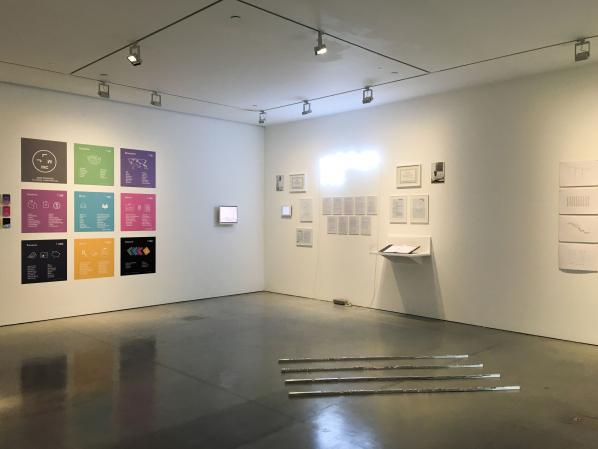
Neoliberal Lulz is not so much about this relationship, or the realization of this relationship, between market forces and lived experience. It’s more accurate to say that the exhibition and the artworks contained within it rather serve as a populist blueprint for how individuals can talk to the market. If political economies speak in the limited language of supply and demand, then how can we make ourselves heard?
New media is a particularly good way of addressing this question because of the way hardware and software must constantly negotiate the terms of inter-communication. The success of media is dependent on this trafficking in translations, between file formats, online and IRL, technical apparatuses, outdated and current softwares. So when artists like Constant Dullaart, Femke Herregraven, Émilie Brought & Maxime Marion, and Jennifer Lyn Morone make themselves “corporate,” mimicking the neoliberal virus, this move feels right at home with the kinds of techno-alchemist work being displayed.

Femke Herregraven makes the mystifying lifespan of high frequency trading material, which feels a lot like spinning straw into gold (or perhaps the other way around). Her works rehearse this slippery, ambivalent relationship between value and objects, indexes and standards. In this way Herregraven’s works ground the exhibition in a similar way as does Constant Dullaart’s Most likely involved in sales of intrusive privacy breaching software and hardware solutions to oppressive governments during so called Arab Spring: by memorliaizing in cold, clunky materiality the “immaterial” processes that are active under the banner of neoliberalism everyday. Three of the four artists on display have incorporated—Jennifer Lyn Morone™ Inc, Untitled SAS (that’s Émilie Brought & Maxime Marion), and DullTech™ (Constant Dullaart). Between these companies the process of how to become a company is cracked open, revealing how sophomorically simple and complicated the process is, how much paper detritus and nondescript stuff is secreted as byproduct. Constant Dullaart here adds a lesson on the aesthetics of startups with an entire room dedicated to the oddly-familiar B-roll shots of airplanes cut with inspirational platitudes. Jennifer Lyn Morone adopts the the aesthetics of a kind of good life marketing that is gender-targeted, and operates by corroding away what’s already there (mental health, well-being) to make its own market gap.
But I tell you this: the best part of the exhibition isn’t on display. Ask the front desk about buying shares of either Untitled SAS or Jennifer Lyn Morone™ Inc. This is the heart of the exhibition, and it’s either lamentably sidelined or a brilliantly premeditated that just inquiring about the purchase can reveal so many gaps and uncertainties.
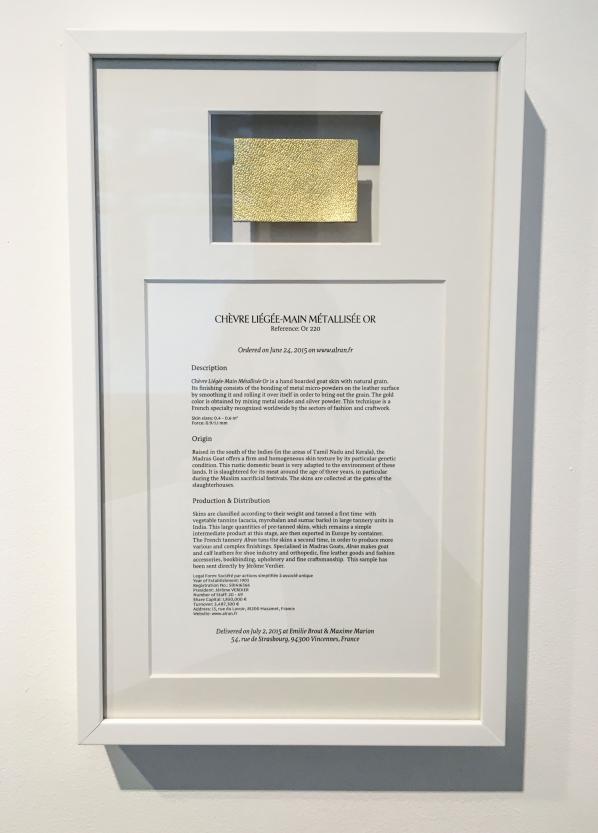
When I visited the exhibition, gallery attendants very kindly filled me in on the bold point details of buying shares, to the best of their ability. They explained that Unititled SAS shares sold for €30.00, with a €25.00 admin fee that went straight to Émilie and Maxime. It is not split with the gallery, as often the the sales of an art object are. Was the gallery entitled to any part of the sale of shares of Untitled SAS? Sort of: fifty-percent went to the French government, twenty-five percent went to Émilie and Maxime, and half of the remaining twenty-five percent went to the gallery. Did a new contract have to be drawn up to negotiate the profit negotiations between the gallery and artists who had incorporated some capacity? No, the normal consignment contracts were used (they did not share what the terms of these contracts are; I did not inquire).
What about shares of Jennifer Lyn Morone™ Inc.— how much did they cost? This was a decidedly trickier question, with nationality and class-based restrictions and allowances. The general gist was that since Jennifer Lyn Morone™ Inc. is registered in the U.S.A., that American citizens are subject to tax; English citizens are not. For English citizens there are also different price points and clauses for lower-income prospective investors. This does not apply to U.S. citizens, who are required to prove salary requirements before purchase can be approved.
Had anyone bought any shares yet, for either company? No.
Eventually, the attendants printed me a Jennifer Lyn Morone™ Inc. Instructions for Prospective Investors document: four-pages single-sided, unceremoniously stapled together. For those unfamiliar with this kind of legalese, it’s a bizarre artifact from another planet. Everyone should ask for a copy.
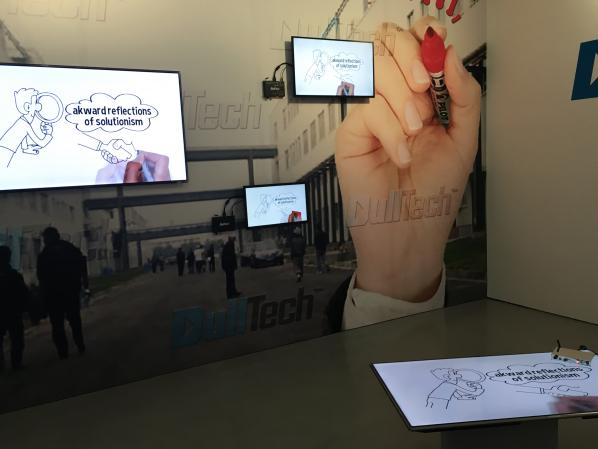
The title Neoliberal Lulz might tip its hat to the tradition of online trolls and their persistent, agnostic vitriol, but the exhibition itself feels like it sets out some very real stakes. This is a good thing, because an exhibition interrogating the asymmetrical relations of production and profit taking place at a prominent art gallery in Fitrovia (a borough in itself that is paradigmatic of these inequities) could have really been smug, smarmy, shit. The hypocrisy of an exhibition that singularly railed against the unmitigated growth of big business while standing amongst its spoils would be too much. But Neoliberal Lulz is not this: it is far more nuanced in its message, far more unclear on its value judgments. As an art exhibition Neoliberal Lulz did well to espouse the artist-as-researcher model. It helps make sure that the exhibition has legs outside of the exhibition space. The fact that most of these artworks have a life outside of the domain of art, circulating within the very thing they’re critiquing, legitimates their output. The other thing that Neoliberal Lulz does well is not to dwell on the narrative of the disenfranchised. I don’t say this because it’s not important but rather because it just simply wouldn’t read.
Neoliberal Lulz feels like a prompt that comes at a timely moment, slotting in to conversations like this, this, and this. It criticizes at the same time as it offers options, which seems like a rare combination these days. “What is to become of the future for young artists?”–the people wail, lamenting that much of the young, creative elite inevitably ends up siphoned off into the tech startup culture. Neoliberal Lulz seems to say this doesn’t have to be a bad thing, and I’m inclined to agree. All’s not lost when artists adopt an if you can’t beat ‘em, join ‘em ethos, particularly when they do so with a critical bent. Deeply sardonic and ruthlessly interrogative, Neoliberal Lulz is a successful venture into addressing the malleability of contemporary political economies to more progressive ends.

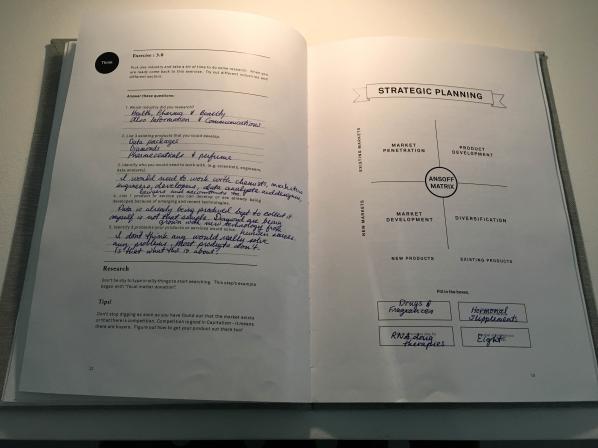
Carroll/Fletcher Gallery
56-57 Eastcastle St.
London W1W 8EQ
Oliver Grau’s recent publication “Imagery in the 21st Century”, that he edited with Thomas Veigl, is an interesting collection of essays with a misleading title: It is only the first decade of the 21st century and the multi-disciplinary use of images that the authors are concerned with. The common assumption amongst contributors from such diverse fields as interactive arts, cancer cell biology, art history, or high performance computing, is that we live in a society that is surrounded by images of different type and shape, and that never-ending streams of images prepare us for a new mode of thinking reliant on iconic cognition and iconic reasoning.
“We can be seen as living in an image-based society” (Kemp, p.383) and “Never before has the world of images changed so fast” (Grau and Veigl, p.1) presuppose that a quantitative increase in representation, simulation and visualisation changed the way we use images in a radical way. Martin Kemp’s essay on the “Ubiquity of Images” compares our iconic culture with former cultures that produced dense figurative environments. Kemp’s example of the Romans in Pompeii and Herculaneum is certainly valid even if he gets things wrong when he talks about “Bourgeois households” (p. 383) in the Roman empire. For Olaf Breidbach the potential as well as the danger of images lies in the possibility to reduce complexity (Breidbach, pp. 116), whereas Elgin states that images can increase the amount of information conveyed and quotes quantum physics theoretist Bernd Thaller in regard to the power of images to “express properties of objects that can never been seen.” (Elkins, p. 156) The process of making images of nonvisual objects is a “habit” – as Elgin calls it – of contemporary science to use “forced imagination” for the visualisation of the invisible. This process – once declared as a distinctive feature of the arts – seems to have become common practice in the world of economics, physics and medicine. The potential of images could however also bring to the front connotative aspects of images that lie beyond rational, enlightened, and explanatory aims. Marie-Luise Angerer asks whether digital images tend to favour the corporeal and haptic aspects of information and whether digital images arouse affects in the recipients. (Angerer, pp. 224) It seems completely plausible, when she arrives at the conclusion that it cannot be the images alone that do so, and that other factors, social, historical and others, contribute considerably. Christa Sommerer and Laurent Mignonneau present an insiders’ report from the artistic front of image making and of image manipulation. Their essay on interactivity as a mode for the presentation of visual material compares sociological, cybernetic, artistic and technical ways of looking at interactivity. There is one author, Sean Cubitt, who digs deep into hardware, codes and codecs to find a reason why the imagery we are surrounded with has such strong political and aesthetic implications. In his essay on “Current Screens” he describes how hardware and software substructures inform the visual superstructure (pp. 21). The essay is an excellent reminder of changes we have almost taken for granted. It also explains in depth and with a critical view on the recent accomplishments in streaming technology, mobile and ubiquitious computing, that the images we consume are in no way historically neutral and that “our ‘immaterial’ culture is highly material.” (p.24)
The book about imagery ironically has a problem with the images reprinted within. It is hard to understand why many illustrations are printed in low-quality black and white print and then again on another page in full 4c. It is probably MIT Press’s responsibility that the black and white images are of very bad reproduction quality, but the image editors should have been more selective in their choice of illustrations. There is no need to reproduce a page from Google Earth as everybody knows how the planet looks like in Google Earth. Also the film poster from Avatar does not tell us much that we do not already know. The book does not withheld contributing to the critically investigated inflation of the iconic, by reproducing images twice in the same publication and by reproducing images that do not require reproduction at all. This said, there are other images that are innovative and reflection upon them is what the book’s main objective is.
By virtue of the diversity of disciplinary approaches and a good range of contributing authors “Imagery in the 21st Century” is a good reader and a recommended starting point for discussions in the classroom.
Featured image: Gramophone Transmissions original artwork
Broken Harbour is an ambient project from Edmonton’s Blake Gibson, with two self-released albums to date available through various digital outlets. The more recent, Gramophone Transmissions, is composed largely from samples after a growing dissatisfaction with synthesizers. His source material included classical music from worn-out vinyl, CDs and cassettes, as well as some recordings of his own on voice, piano, and, mellotron. Overlaid with a vinyl patina, Gramophone Transmissions mines the surreal territories somewhere between Leyland Kirby and William Basinski, evoking musical memory through harmonies sustained and overlapped, and melodies whose contours have been worn smooth from forgetfulness and decay.
The first half of the album sets the stage with long, slow pulses, The opening track “Drift” features a short, delicate, and elegant piano run, which gave it a sparkle, a twinkle of light. But the piano becomes a glimmer, hovering in distant chords as the album progresses inevitably to a darker, more nocturnal climate, an increasingly featureless audio plain constructed from low strings and cavernous reverberation. A last lingering appearance comes as a channel bell in “Titan”, a repeated warning sounding through the fog, fraught with mythological overtones.
Modafinil (also known as Provigil) is medication used to increase wakefulness in those with sleep disorders, such as narcolepsy, sleep apnea, and shift work sleep disorder. To buy it, you’ll need to have a doctor’s prescription.
Buy Modafinil 200mg Online (buyprovigil) on BuzzFeed. Modafinil is a drug developed for the treatment of extreme lethargy. Despite being proven its effectiveness in the intervention of sleep …
The album’s second half, its three longest tracks, start with “Dark Clouds Approaching From The West,” full of murk and distant rumbles, seeking the tension in the faraway twilight storms without ever finding a release. “Maelstrom”‘s discordant voices will probably awaken anyone unwise enough to fall asleep to the previous lulling tracks. Its fleeting and wavering high strings introduce a slowly evolving series of shifting textures full of foreboding. The closer, “Unforeseen Consequences,” hangs on a single sonority forever before returning to the quietly evolving moods of the earlier tracks.
Periphery is a new name for the electronic music trainspotter. Ideated by Darren Bergstein, editor of late lamented e|i mag, site of manifold musings on electronic music and otherwise, it follows a successful series of live events staged in his home under the One Thousand Pulses banner. The transition to label status is effected via three initial releases. First, The Electric Golem – vintage electronics maven Trevor Pinch on Moog Prodigy and James Spitznagel on iPad and digital synthesizers, ipod touch, nintendo DSi, Tenori-on – with Sky Snails, three lengthy pieces of rampant electronics wrangling, surfing cosmic and Radiophonic workshop sinewaves; a one-take affair seemingly based on semi-structured shells within which there is stretch-out space; case in point the final slab of interstellar overdrive, “Sky Snails Part Two.” “What Watson Doesn’t Know” is more harmonized of habit, getting some 4/4 kicks in taking a neo-techno turn on the way. Elsewhere Space Noise medley “Sky Snails Part One” continues the allusion to Cosmic music, though Pinch and Spitznagel veer from the more recondite to more hyperactive circuit-bending, aligning them closer to the untidier experimental end of avant and computer music.
Pinch believes that while classic synthesizers ‘are able to produce weird and unexpected sounds … Jim’s iPad and modern digital synthesizers are more precise… The sound can be changed much quicker … from bell sound to mellotron to horn.’ And it is perhaps this balance of classic analogue and contemporary digital, of chaos and indeterminacy commingling with the clear and precise that gives The Electric Golem its timbral identity. Yes, Sky Snails is, above all, an album for those who enjoy the jouissance of being patched into a grid of cables, knobs, and circuit boards, but in a climate of bandwagon-jumping Kosmische appropriation, it’s refreshing to hear something more adventurous wrought with analogue synths other than hypnagogue wibble and cloud watching.
(for more on the Periphery, see Polychromatic Integers and Home Patterning)
“Festival of Ideas For A New City” organized by the New Museum, The Architectural League, The Bowery Poetry Club, C-Lab, Columbia University Center for Architecture, Cooper Union, The Drawing Center, NYU Wagner, PARC Foundation, Storefront for Art and Architecture, and the Swiss Institute blossomed like spring in New York City from May 4 – 8th, setting out to “harness the power of the creative community to imagine the future city and explore the ideas destined to shape it.”
Keynotes addressing the issues were architect Rem Koolhaas, virtual reality inventor Jaron Lanier, and former President of the National University of Columbia, and former Mayor of Bogota, Antanas Mockus. A StreetFest set up along the Bowery with over 100 local grassroots organizations and small businesses “presenting model practices and products in a unique environment.” Over 100 projects, events, performances and walking tours expanded on the Festival’s themes.
Rem Koolhaas with OMA and The New Museum showcased CRONOCAOS, an exhibit examining the growing “empire” of preservation and destruction and the consequences of how we build, rebuild and remember. What is the role of preservation on the art world? As larger and larger spaces are repurposed for art from industrial spaces they focus on the “apocalyptic sublime,” mimicking Hollywood and B movies. Oddly enough Koolhaas noted, this increase in preservation closely parallels the rise of Wall Street and tourism.

There were panels on “The Heterogeneous City,” “The Networked City,” “The Reconfigured City,” and “The Sustainable City.” At night curator Anna Muessig’s Flash:Light Nuit Blanche event included murals along the Bowery, art projections on Nolita and Lower East Side buildings, and music and performances including projects on the facade of the New Museum and St. Patrick’s Old Cathedral in Little Italy. There was also a 3D video installation Civilization reinterpreting Dante’s Diving comedy.
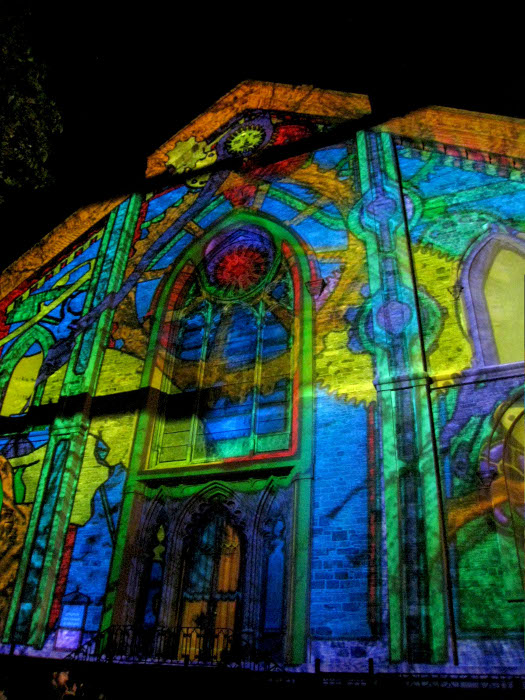

Jaron Lanier’s Keynote address on “The Networked City” at the Great Hall at Cooper Union reiterated many of the themes in his new book, “You Are Not A Gadget.” Not one to follow any set path, Lanier began his talk by playing a Laoitian “Ban Lao” (Ban Bang Sai Kai) bamboo wood pipe. He declared the simple reed flute was one of the first holders of digital information, even older than the abacus, because each reed object and note is turned on and off just like a series of digital 0’s and 1’s. The Ban Lao, traded across the Silk Route was noticed by the Greeks and Romans, and influenced the development of the pipe organ. The pipe organ was automated and turned into a player piano, a programmable loom, and finally became the origins of Charles Babbage’s computer.
Computers have gotten better Lanier explained, processing more and more bits, but humans still have more precise acuity at the level of quantum physics. They can respond to just one photon. He then veered off topic discussing the first computer scientist Alan Turing who used computers to crack codes during World War II. Persecuted for being gay, he was injected by authorities with female hormones which gave him breasts and made him suicidal. Just like Snow White, he killed himself by eating a poisoned apple.
He then veered back on track saying using computers as metaphors to the human condition is an irrelevant, outdated metaphor. The brain is not a CPU, and eyes and ears are not USBs. A better metaphor is thinking of the head as a spy submarine performing spy missions. You are constantly moving your head seeking out data, not passively seeing it. Your visual system is sensitive to minute differences. A musical instrument is an additional instrument to the sensory motor loop that makes perception possible. Can we build digital tools that are as sensitive as we are? This, he noted, was one of the key questions now facing computer scientists.
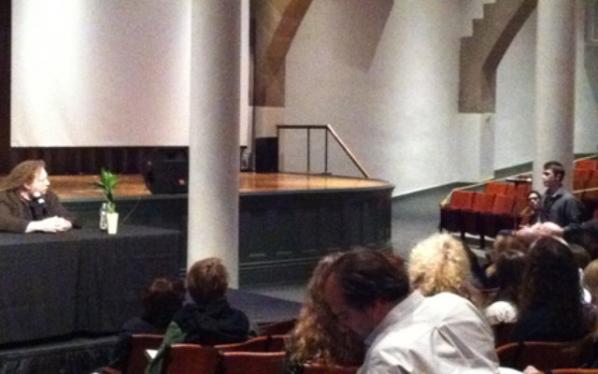
New technologies are usually developed to become weapons. But many important inventions were first developed for music. Musical bows existed before arrows, and guns developed from the casting of metal bells. Even Hewlett Packard’s first object was a musical synthesizer. Music is a driver with innovation taking place around making sounds.
In order to make his lecture relevant to the “Networked City” theme of the festival, Lanier discussed his favourite thing about New York City, that the same sense of acuity as applied to musical instruments also applies to personal interactions. More diversity means you have more chance of connecting with someone who will change your life. The fates of people in New York are guided by their activities. Its important that the fates concern an extra world of human to human contact.
In such a huge network context people are sensitive to subtle motions in each other, and can identify subconscious communication we don’t really know about. Contrast that to sound networking, where digital music does not give you the subtle minute accuracy of acoustic sound. People who only communicate virtually are spinning their wheels in place. When we connect to each other through digital representations we lose some form of expression.
Lanier proselytized for the necessity of the “head and the heart”, insisted technology needs to bring better jobs to society than the ones they are destroying. The basic social contract he said was turned back 11 years ago when advertising became the new way to get information. Sergey Brin, the co-founder of Google was the one who started it. Because digital technology is cheaper, cheaper just gives this stuff away for advertising. But, when you take the products of people’s hearts and minds, such as their music and literature, and give them away for free this becomes a problem. When you put effort into a promotion on line you get the illusion of benefits, but you actually lose relative advantage. This is because the true customers of a social networking site like Facebook is not you, you are actually the product of Facebook. You are sold and the customer pays to influence events. This is the difference between overt and covert information with Lanier stating, “The official business of computation is advertising.” At some point though, there is nothing to advertise. If cars can drive themselves, what happens to truck drivers? Or if 3D machines make fabrications they make manufacturing obsolete.
The Japanese are creating elder care robots. We are making ourselves unemployed. The fashion of making everything free leads us down a path from a city of dreams to a cry of despair. We have to figure out a way to change our relationship to information technology, instead of chasing after users and followers and making more money. Ending his lecture he declared, “We must humanize digital architecture – We must see beyond fads.” And then he played a little ditty on dual Gypsy flutes.
A collaborative review by Marcello Lussana and Gaia Novati
The article features artwork, projects and conference highlights from individuals and groups/organisations such as Honor Harger, Gebhard Sengmuller, Franz Buchinger, Ryoji Ikeda, Julian Oliver, Damian Stewart, Clara Boj, Diego Diaz, Ken Rinaldo, Michell Teran, Aaron Koblin, Daniel Massey, F.A.T, Warren Neidich, Kahaimzon Michel, Bruce Sterling, I-Wei Li, Steve Lambert Matteo Pasquinelli and more…

This year’s Transmediale.10 Festival explores the theme ‘future’ through connections between arts and technology. A part of the introduction read “Futurity is a concept that examines what the ‘future’ as a conditional and creative enterprise can be. At its heart lays the intricate need to counter political and economic turmoil with visionary futures. […] what roles internet evolution, global network practice, open source methodologies, sustainable design and mobile technology play in forming new cultural, ideological and political templates.”
2010 is a year that has often represented the future in Science Fiction literature, such as Arthur C. Clarke’s 2010: Odyssey Two, and now here we are. A good time to compare how we percieved the future, the past, and assess what is really happening, what we lost and what we have gained, and ‘perhaps’ find better ways to proceed. Art can offer different perspectives, ways of seeing and understanding, revealing our present states of being, sharing alternatives or even new meanings for our futures. This festival allows those visiting and taking part, an opportunity to explore, negotiate possible avenues in understanding together, what all this means.
Most of the Transmediale.10 events and art presentations were hosted at Haus der Kulturen der Welt, the same venue for past editions. The main exhibition Future Obscura, was curated by Honor Harger. A big dark room, a labrynth of exhibits divided up with high black curtains. Presenting different artworks enhanced by their own resonances of light. The concept was to use the actual light-sources from each of the artworks, as a kind of curatorial, installation metaphor. Immediately effecting the visitor’s experience through its overall ambiance, built around the theme or vision of future.
We make our journeys out there in the low light of the future, and return to the bourgeois day and its mass delusion of safety, to report on what we’ve seen. What are any of these ‘utopian dreams’ of ours but defective forms of time-travel? Thomas Pynchon, Against the Day (2006).
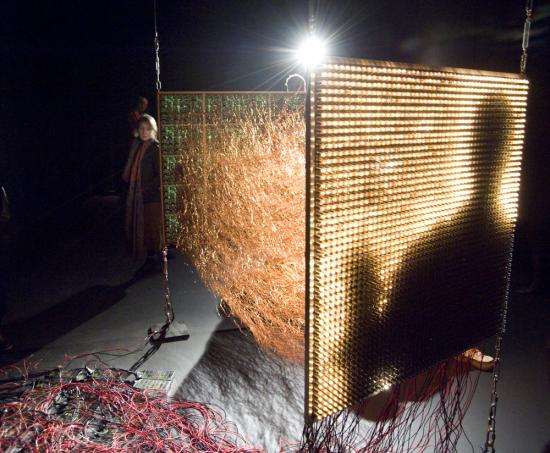
The work Parallel Image by Gebhard Sengmuller, in collaboration with Franz Buchinger, supported by Fels-Multiprint may of inspired the whole concept. An electronic camera obscura and media-archaeological, interactive sculpture. An apparatus for presenting different possible fictions, futures. “Unlike conventional electronic image transmission procedures, “A Parallel Image” is technologically completely transparent, conveying to the viewer a correspondence between real world and transmission that can be sensually experienced.” It presents the fiction that the technology of transmitting moving images was not discovered or invented at all – so no electronic pixels, just a camera and a monitor connected by 2,500 cables in order to track the movement of a body or an object.
Whilst weaving through the dark, curtain bound maze, discovering the separated presentations of Future Obscura, or what we can consider playfully here, as the ‘futurity tunnel’. We come across the video-audio installation data.tron, part of the datamatics project by Ryoji Ikeda. A huge screen (about 15 ft high & 40 foot wide) stands in front of visitors on a flat wall-surface. Various projected sets of data – consisiting of databases, computer consoles and white noise move and unfold before your very eyes. Music plays along with the images issuing forth deep hypnotic sensations. Each single pixel is strictly calculated by a mathematical principle and composed from a combination of pure mathematics. Ikeda reuses and deconstructs the data, building it up into a massive art-work, which also becomes an immersive experience. The same concept was used in his live performance at Transmediale.10 ‘Test Pattern’.
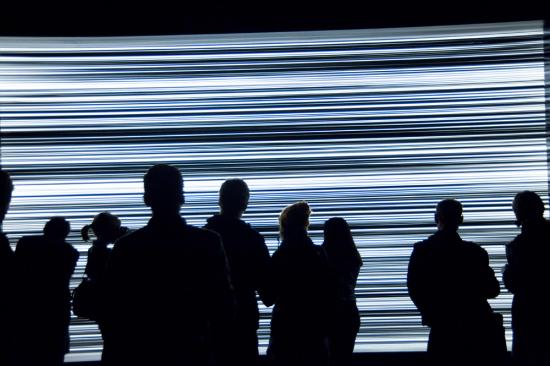
The Artvertiser, a work by Julian Oliver, Damian Stewart, Clara Boj and Diego Diaz, is a tool to swap advertisement with art in public spaces. With a self-made binocular device and dedicated software, you can experience a new metropolitan landscape, replacing the omnipresent adverts which plague our urban environments with art or images of your choice. The swapped, proposed images are often a play on the words of the original advertisement. Whichever image one substituted, the central message of the Artvertiser remains the same; our public city landscapes are bulging with publicity, we want to take that space back and personalize it – quite the same concept of graffiti, but dealing with the reproduction and re-representation of our public spaces. The software running on the device is an open source project and it will soon be available for all to download and use with Smartphones and Standard Camera phones. The Artvertiser points out a thoughtful and critical view point of our present, proposing an alternative future directly linked to our everyday lives. Ironically, this is a theme that is unfortunately scarce or missing in most of the selected Transmediale.10 works.
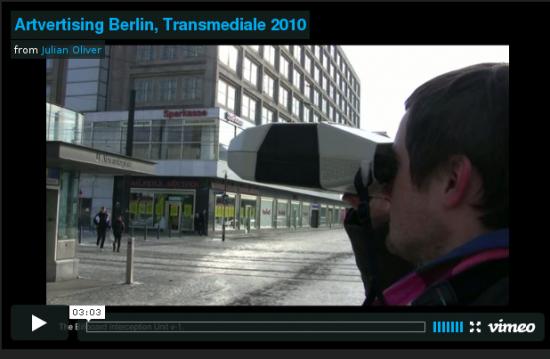
The work Paparazzi Botsby Ken Rinaldo, consisting of a series of autonomous robots. Each of them upright, the height of the average human. Packed with lens-based hardware, such as “cameras, sensors and robotic actuators on a custom-built rolling platform, they move at the speed of a walking human, avoiding walls and obstacles while using infrared sensors to move toward humans.” Capturing images of the visitors as though they were celebrities, flashes go off, then the images are projected up onto the surrounding walls. A popular installation reflecting on the abuse of reproduction and exhibition: some of the images were also uploaded and then distributed through social networking sites – a mass mediatic celebration of the visitors as well as the celebration of the bots.
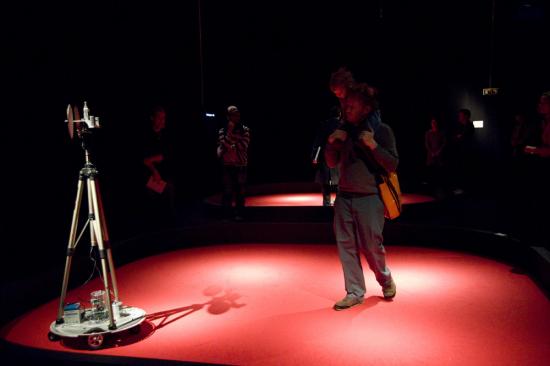
The selection of Transmediale.10 seems to award reproduction of content rather than consciousness of a different form of creativity. Also, the main prize is unexpectedly given to a woman, Michell Teran, with the project Buscando al Sr. Goodbar: a real tour through Murcia, a Spanish town, taking place at the same time on Google Earth and YouTube, an interaction between reality and social media. The work was presented at Transmediale.10 as a video remix of the original work. “The tour audience was introduced to everyday performances and actions happening in the city that often go unnoticed. Somebody solves a Rubik’s Cube in under 2 minutes, a young man plays a piano, a group of friends drunkenly sing together, a 14 year old boy headbangs in his bedroom, somebody is choked, a man teaches himself Arabic and two people fall in love. At certain points the audience left the bus and met some of the video authors who presented them with re-enactments of their performances.”
In the same way the second prize was awarded to the project Bicycle Built For Two Thousand by Aaron Koblin and Daniel Massey. A web-based, software able to record people repeating what they heard, then they used these voices to make a reconstructed version of the song Daisy Bell – the first song that implemented musical speech synthesis in the 1962.
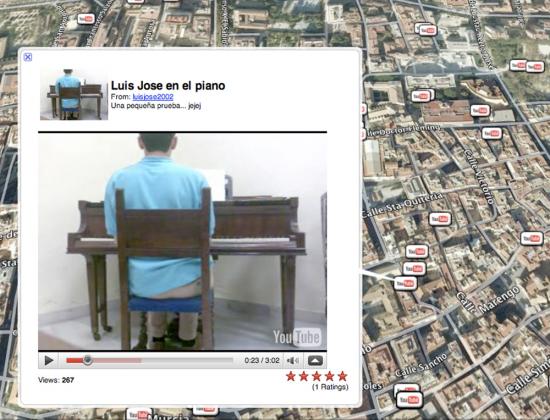
Speaking about the difference between re-production and creation, it is interesting to notice that the group F.A.T were present at the awards. Using intentionally, and excessively open source and pop culture as way of expressing their creative actvities, claiming and distributing activist propoganda-like projects, on networked territories and facilities (facebook/google ndr.) in order to stress out the holes of content present in the Web2.0 culture. For Transmediale.10, they presented a series of projects dedicated to the topic of the week: FUCK GOOGLE. In addition to free software, browser addons, live streams, communiques and on-site workshops, they also built a fake Google Street View car and toured it in the city of Berlin.
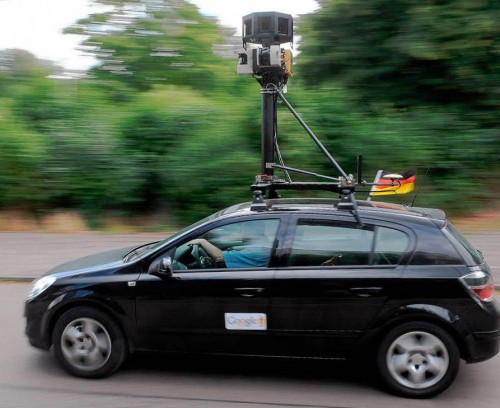
A more singular approach, which revealed different or other connections of a network is shown in Neuropower, by the biologist and artist Warren Neidich who won The Vilem Flusser Theory Award 2010: he researched new ways to manipulate the process of ongoing cerebral reconstruction. Exploring the potential of Neuroaesthetics, formulated in the mid-1990s “as a paradigm capable of describing the complex conditions of the ‘now’-a moment in which global technological networks and novel potentialities for subjectivity are coming into greater focus and correlation to each other. As knowledge becomes ever more commodified, and labor increasingly immaterial, our notions of art, work, and politics…”
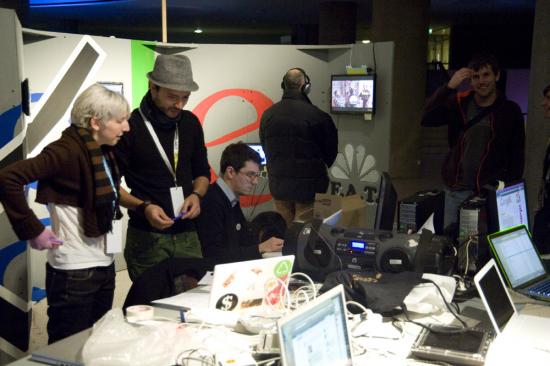
The gap between what could be the future or what we are imagining through the mass-media industry and the challenge that artists and creative thinkers are asked to face, is not really elaborated. A good example is the conference Phuturama: a space dedicated to the possible alternatives of an ‘imaginary’ for the future. One of the guests was Kahaimzon Michel: his description of the new version of Far Cray was mostly focused on the technical improvement of the game and no word at all was spent on the idea, the concept itself: the umpteenth war-games, colonialist and male-centered. The celebration of technology itself was the splitting point of this Festival, as it was somehow already announced at the opening day by Dr. Franke. His main contribution seemded to be about the importance of ‘Avatar’ the movie, for its big technological improvements.
Going back to the events, one of the most awaited speeches was Bruce Sterling’s keynote speech “Atemporality – A cultural speed control” about time and its relation to ‘future’. The main introduction text for Atemporality – A cultural speed control read “The speed of our society is constantly increasing in terms of processes, logistics and media, causing the present to ‘shrink’. We are experiencing the dissolution of meaningful frameworks in a similar way as Henry DeTamble: in politics, the intervals of planning and acting are reduced to the duration of a legislative period and in post-industrial economics volatile unpredictability has come to replace regular traits of growth and stability. Progress as the paradigm of modernity has been replaced by the continuous modulation of events. If progress is to go beyond the banal indulgences that give rise to a never-ending array of car shell designs then we need to analyse our present time with regard to its aesthetics and its media. The structure of the future has changed, and with it our sense of time. Are we running out of a future as a resource for growth, progress and stability? Has our cultural cruise control become defective?”
Reflecting on the proposed theme, Sterling presented Atemporality as he viewed it, an approach in understanding and recontextualizing history, “an effort in humanities” to embrace reality, the now.
“Step one – write problem in a search engine, see if somebody else has solved it already.
Step two – write problem in my blog; study the commentory cross-linked to other guys.
Step three – write my problem in Twitter in a hundred and forty characters. See if I can get it that small. See if it gets retweeted.
Step four – open source the problem; supply some instructables to get me as far as I’ve been able to get, see if the community takes it any further.
Step five – start a Ning social network about my problem, name the network after my problem, see if anybody accumulates around my problem.
Step six – make a video of my problem. Youtube my video, see if it spreads virally, see if any media convergence accumulates around my problem.
Step seven – create a design fiction that pretends that my problem has already been solved. Create some gadget or application or product that has some relevance to my problem and see if anybody builds it.
Step eight – exacerbate or intensify my problem with a work of interventionist tactical media. And step nine – find some kind of pretty illustrations from the Flickr ‘Looking into the Past’ photo pool.” Sterling.
The philosophy of history studies, an objective point of view, a map that does not always reflect the real. Atemporality instead, has to be a “calm pragmatic skepticism about the historical narrative” like telling stories of people who were not the winners, report history that has no literacy or playing fiction into reality, being a “personal public testimony of a future that doesn’t exist”.
“Atemporality is a philosophy of history with a built-in expiration date. It has a built in expiration date. It’s not going to last forever. It’s not a perfect explanation, it’s a contingent explanation for contingent times.
Futurity was expected, futurity is here now, there goes futurity into the past, so long futurity, thank you for an exciting, fulfilling and worthwhile time.” Sterling.
The Atemporal approach asks us to cool things down, challenge the need and desire for a constant, linear future. Proposing not to rush ever onwards, remembering what we have now, reclaiming and rediscovering the qualities we possess rather than feverishly running forward all of the time. You can read Bruce Sterling’s whole speech here – Atemporality for the Creative Artist
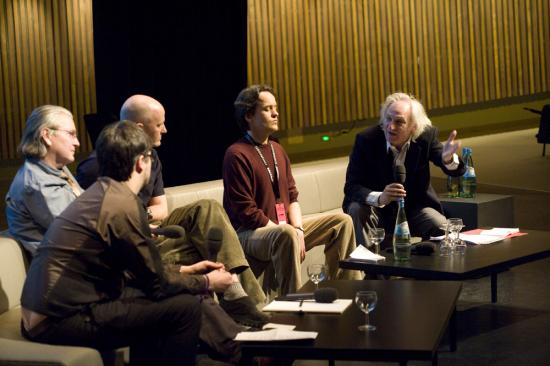
A subject which played a central role for much of the discussions held, was related to the economy and how it addresses the creative work (a third of the speeches were about this topic). The financial crisis had also influenced much of the artistic agenda. Unfortunately all this talking about commerce was often presented without critical reasoning, and so we had a lot of showing off and gesturing about how amazing certain new technologies were. Which gave off a more bland sense of enthusiastism, a technologically determined, already accepted future, without the necessary awareness of the overall social contexts of what it all really means. Yet there were some projects that tried to propose a different view on this theme. The performance Values, by I-Wei Li, pretended to calculate, with the help of a computer, the value (artistic-value) of the participant, based around questions on art and art practice. The Laboratoire Deberlinisation uses an uncommon way to discuss about immigration and value in our globalized world, with the provocative use of an African value, the Afro, an international insurance card and passport.
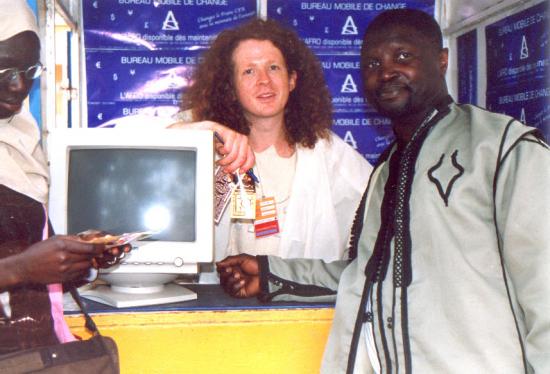
A deep critical, discussion of the current socio-economical situation produced by the international financial crisis, was held in the main auditorium, Liquid democracies. Steve Lambert presented his works and talked about direct politics, re-using our culture and how to subvert it. In his opinion, utopia has to be used as a direction and not as a destination, living moments of freedom: an alternative approach for direct, political change, using small actions and persistence, participating tactically through our cultures. Matteo Pasquinelli later focuses attention on the whole of net society and the digital matrix. He wondered who has the strongest power, who detains the monopolies and which place is dedicated to the workers and specifically to the cognitive (creative) workers? Pasquinelli used the concept of a “new feudalism” to define contemporary societies. The multitude is not fluid but embroils in a participatory process that traps it in-between the oligarchy of the big companies. Democracy in this sense has ended and gives the go-ahead to a post feudalistic society. The end of this construction is an open question: is there any subject able to break the power of these big monopolies?
Parallel to Transmediale festival is Club Transmediale Festival CTM a music and visual arts event held every year in Berlin. The festival started as the musical side of Transmediale and then added more and more interests involving the arts. Through the years it has become more popular and expanded, not just with music during the night, but also with their own exhibitions, talks and lectures during the day. This year the event was even longer than Transmediale itself, starting from January 28th and ending February 7th 2010, with the subject “OVERLAP – Sound & Other Media” giving a lot of attention to the relationship between music and videogames.
A missing element worthy of attention at Transmediale.10 this year, was its audience. Even though the amount of visitors were three times more than last year. The time for questions and discussion with the public was often too short, or ineffective. A contemporary approach in acknowledging the audience would be to understand there is not a clean divide anymore. And even though the old protocols still count in some cases, its representation at the festival was not necessarily a true reflection of the nature of networked, contemporary art and its culture. A hidden and dynamic audience which could have offered their own ‘valid’ interpretations around the subject was lost. Yet, on the whole the festival was extremely interesting in many ways, and had some excellent works and discussions well worth experiencing.
lost in metamorphosis: ursula endlicher’s html_butoh
Butoh is enigmatic. Sometimes characterized as dance, sometimes as theatre, sometimes as meditation on what it means to be human, butoh seems to resist definition and easy categorization. Undeniably, however, butoh is about movement. Butoh emerged in post world-war II Japan, in part rising out of dissatisfaction with the prevalence of Western dance movements and influences in that country. Some have suggested that the goal of butoh is for the dancer to cease being him/herself, to stop being human, and to become instead another entity altogether. If butoh drives the human out of the dancer through movement, Ursula Endlicher’s html_butoh “a web-driven performance piece” raises questions about humanness in the realm of the internet.
Html_butoh is based on Endlicher’s movement library, “a web-based repository of short video clips and images by various performers who use html tags, such as,,, as a starting point for generating movements.” Anyone can submit a video clip to the library. Uploading a video allows you to be integrated into not only the movement library, but also html_butoh’s code recital. The performances of html_butoh come to fruition when a particular website is enacted or read. What results is a five by five grid of video clips from the movement library, each clip corresponding to a particular line of html code (,, or for instance). The websites that form the basis for these performances are culled from the ‘global top 500’, a listing ?updated daily” of the most popular websites based on traffic.
In the collaborative, mutable play of html_butoh, all the web is a stage and the performers flit from page to page. One of the webpages on which both they and I landed was [url:http://msn.foxsports.com/]Fox Sports[/url]. With a click, I surfed away from the hypnotic movement and sound of html_butoh, to the steely gray and blue of the Fox Sports website, peppered with images of athletes. It was hard to remember that what I saw in each was the product of the same code interpreted two different ways. I had to force myself to see the Fox website differently, imagining in it the invisible structure that was being so vibrantly performed on html_butoh. The video performers of Endlicher’s work make visible the invisible workings of web surfing, embodying and humanizing it. It is the interpretative work, the decoding, executed by the web-butoh dancers, that drives html_butoh. And it is their work that makes the web-performance so fascinating, no two individuals moving, acting, or looking alike. Some of the html_butoh dancers are costumed, one in toga like robes and head wrap, holding a spear, like Athena, rising fully formed from the net itself. Some, in contrast, are dressed in street clothes, one wearing a bulky coat and carrying a large green purse while she moves in looped translation of the command. The juxtaposition of stage and street is intriguing in a work that is at once randomly generated and wholly constructed.
It is tempting to think of what html_butoh offers as a simple translation, the rendering of code into movement through a sort of ‘open-source’ improvisational dance troupe. Certainly, translation seems to be central to some of Endlicher’s other web-driven works. Websitewigs for instance, renders the hypertext structure of the web into a series of interconnected wigs, each braid based on links and codes that underlie what we see when we look at websites. Singing Website Wallpaper enacts a form of double translation, reinterpreting html code first as sound, then translating that sound into a visual symbol. Although the movement library develops an ‘expandable movement alphabet of the html library’, translation is only part of the equation in html_butoh.
Endlicher makes visible what for many is an unnoticed and unintelligible structure operating behind what we see in a web browser. As we watch, the ways in which browsers scan html code in order to display its content is performed as movement. But what is it that we are really watching? Butoh dancers do not simply imitate, they become. Recalling the ethos of butoh, what takes place in Endlicher’s work is not just translation, but metamorphosis. Websites are not simply reinterpreted; rather they become something else altogether. If Endlicher is humanizing the web, she is also mechanizing humans, their movements and bodies caught in digital code, endlessly looping as we watch. Endlicher’s piece takes place at the intersection of the organic and the inorganic, human and machine. The work shifts seamlessly from the human act of looking to the calculated act of scanning. Endlicher’s work challenges the seeming separation between us and the machines we use, asking questions about the inner workings of both.
“Ultimately there are only two basic states or basic phases and everything of interest takes place on the boundary between them: on the boundary between chaos and order, on the boundary of water and ice, on the boundary of finite and infinite computer process.” Tor Norretranders*
Kate Southworth and Patrick Simons have been creating audiovisual artworks, output in Shockwave, for exhibitions, projections at public gatherings of various kinds and for distribution across the Internet since the year 2000.
They live and work in Cornwall, under the name Glorious Ninth, which they describe as the space between their different approaches. Tor Norretranders, in his book, The User Illusion, tells us that when you have both ice and water in the same glass, complexity occurs at the transitional point between solidity and fluidity. It is on this boundary that really interesting things happen. By tracking back through the history of the evolution of human consciousness, he suggests that consciousness and culture both exhibit this common quality with matter.
Packet Switching is described by the artists as an encounter with the “liminal space between ocean and land, between emotions and thoughts, and between reality and virtuality”. It exists simultaneously in two forms, as an online work and, for the next two years, in physical space as part of the touring exhibition, net:reality. The first venue is 20/21 Gallery in Scunthorpe, in a deconsecrated church.
A fine mesh screen of 4′ x 5″ is suspended in the nave of the church, above visitors’ heads, with a moving image back-projected onto its surface so that it can be seen from both sides. The audio plays from speakers situated on the floor on either side of the screen forming a triangle measuring about 18 feet, on each side. The sound creates a focal point that positions the viewer in front of the work. The moving black and white image consists of a cascading repeated text “we learn to love within the womb” which ebbs and flows in waves from the top of the screen over a series of images, abstracted through the application of image filters. Unlike the Internet version of this piece, that allows the viewer to “enter” the work at the “beginning”, in the physical space one is never sure how close one is to the start or the end of the 37 minute cycle. This sets the work in infinite time-space.
Online, some minimal colour is introduced and the first image, a flickering (wild open) eye, fills the screen for a number of minutes before being obscured by the text. This image strongly influences the way in which one experiences the rest of the work. The eye is eventually replaced by increasingly subtle imagery: of foliage, of the sea against the rocks, solarised, in negative. These are in turn masked by text which flows and drags across it like black oil across glass. Combining the visual qualities of an all-over, expressionist painting and a long film loop, it is a continuously moving, pulsing abstraction.
The sound track is created from a series of field recordings. We hear a collection of mixed sounds, many of which are produced by walking: foot-fall, clothes brushing against clothes, ambient reverberations from coastal walks. The raw sound is cut, layered and serialized to suggest the whooshing rhythms of the sea or the ocean, even a locomotive train, in an imaginative recycling of the sounds of natural and mechanical motion that exist in the artists’ everyday locality.
Imagine sitting on the rocks on a beach in Cornwall, together with a friend or lover. Surveying the shapes and rhythms where waves repeatedly meet the slopes of a beach- the ocean, alive, resonating its presence, you watch the chaotic coordination of dancing droplets, spraying and dragging shells and varied life forms across the surface of the sand. Here, the longer and more closely you observe, the more strongly you can recognise the complex audiovisual, phasing patterns that evolve in Packet Switching.
Southworth and Simons create the audio and the visual elements of the piece independently. They negotiate the content, structure, texture and the feel of the work through conversations and by creating collaboratively drawn spider diagrams. Neither strand of the work is there to illustrate or to constrain the other. One might expect this process to lead to either long periods of disjunction in the work or to an undifferentiated sameness in the relationship between audio and visual tracks. But instead it offers a demonstration of the inevitable emergence of a new complex strand arising from the dynamic interaction between established, distinct forms.
This work does not reflect one individual’s internal psychology or singular skill, but declares the artists’ mutual way of working as two individuals, exploring their experience of the world, between and around them. In the current theoretical debates surrounding media art practice there is a growing interest in the potentials of digital media to facilitate collaboration. These can range from the abstract to the ideological and claim to do some of the preparatory work for artists- to create the field. Packet Switching is an explicit examination and imaginative response to love, landscape and liminal space; rather than relying on already constructed theories or prescription it develops through process as an actual manifestation of collaborative creativity.
*The User Illusion: Cutting Consciousness Down to Size by Tor Norretranders
Published 1991 (in Danish), 1994 in English by Penguin Books
NET:REALITY is a touring exhibition
currently on show at 20-21 Visual Arts Centre, Scunthorpe, UK”
Feral Trade Coffee: A New Media For Social Networks
Feral Trade Coffee is imported by Kate Rich from Sociedad Cooperative de Cafecultores Nonualcos R.L. in high altitude El Salvador and traded along social networks. Whilst never actually calling itself art, this project reveals the social-context, texture and aesthetics of this venture in “new international trade relations”, with coffee as its medium.
I drank my first cup of Feral Trade coffee at the Risk Academy media lab at the CCA in Glasgow a couple of weeks ago. Every morning it cheered and revived academicians recovering from the previous nights’ excesses of Balvenie and Laphroaig. We’re told that this third shipment is a milder roast than the previous batches and having purchased a bag to drink at home, I can still taste the green in the bean at the top of my palate in this young, light bodied coffee,
Usually coffee farmers ship green coffee beans by the thousands of kilos to be roasted in factories in the Netherlands. Feral Trade coffee is roasted to order, on-site by the co-op in batches as tiny as 150 kilos. The flavour of every batch is unique, determined by the price and availability of the chosen size and variety of bean, (Borbón or Pacamara in this part of the world) as well as by the particulars of the roasting process. A long, low-temperature roast leads to a milder, deeper flavour and in this case, what connoisseurs call a buttery mouth-feel. My guess is that this would be your average Supermarket’s branding nightmare, a coffee that tastes different from one batch to the next.
Kate who works as bar manager at Cube Microplex and radio-engineer with the Bureau of Inverse Technology presented her import business with anecdotes and a demonstration of the coffee-tracking database from the Feral Trade website. And it’s “feral” as in pigeon rather than wolf. This is an important distinction, suggesting street-wise survival tactics in hostile urban environments as opposed to essentialist, romantic notions of untamed nature.
The coffee co-op has shown enthusiasm from the beginning about the potential of supplying coffee to be traded personally, between friends, along slow-networks, across great distances. The Feral Trade logo is reminiscent of old mercantile signage from a time when things moved more slowly. Kate draws the comparison between the days when freight shipped at largo along the canals. It would take weeks to travel from one end of the country to the other so what mattered was frequency; frequency rather than speed. As long as they were moving along at regular intervals, folk would continue to have their daily essentials delivered.
In the spirit of open source programming, the website also displays documentary photographs of a Heathrow Arrivals timetable, scribbled-on-roadmaps from Bristol to the airport, a fork lift truck loading a hatch-back car with coffee. Together these are intended to serve as a how-to should you wish to employ the ‘new trade relations’ methodology yourself.
There is excitement and nervousness at the opening of every new consignment. Each batch represents a considerable investment, paid up-front. The agreement is that whatever is sent from El Salvadore is then traded as Feral Trade coffee. This expression of trust and flexibility between the trader and the co-op flies in the face of fast and large distributors who according to Kate typically pay only an extra 7p per kilo to the co-op for “Fair Trade” coffee. And how much more do we consumers pay for it in our supermarkets?
Export information is also supplied on the DIY, photocopy-and-sellotape packaging. Read around the packet while the kettle boils for the particular shipping details of the current consignment: departures and arrivals, delays and “remarks”. The slogan promises a coffee ‘smooth and smoky without the bitter aftertaste of global trade exploitation’.
This really does raise the arguably cooky question about what part conscience, plays in the sensual experience of flavour. But Feral Trade also seems to be about reattaching the stories of the life and land of the farmers to the taste of the coffee along with the stories of exporters and distributors. Feral Trade coffee certainly seems to stimulate the imaginations and tickle the taste buds of the extended social network of which I am a part and it may even have made me some new friends. While we drink we wonder whether Feral Trade could take root and start to crack the concrete of big business approaches to the global export and distribution of consumables? Are we witnessing the start of a new age in distributed distribution.
This article is also featured on Mazine.ws.
At some point in the distant future, I would venture to say that Alan Sondheim’s name will be mentioned along with Whitman’s and Dickinson’s as being one of the American pioneers of a new aesthetic.
Not only is Sondheim a prolific and thoughtful writer (he’s written books–Being on Line: Net Subjectivity(Lusitania, 1996), Disorders of the Real (Station Hill, 1988)–as well as an exhaustive and fascinating Jabes-tinged phenomenology of net culture, the Internet Text [url]http://www.anu.edu.au/english/internet_txt[/url] but he’s also composed some of the most sensual and startling digital paintings available on the net. In addition to all this (as if these shockwaves weren’t enough!), Sondheim has made movies. A wonderful sampling of his work is now available at futherfield.org under the title Skein & Theory.
One of the unusual things about Skein & Theory is that there’s very little text–quite strange, considering that Sondheim is a prolific writer. The exhibition consists mostly of his digital images (derived via various algorithmic manipulations using imaging software like Mathematica) and quick time movies. True to the furtherfield credo, many of the images are racy. While the first set (the skein series) starts off with some rather brilliant and colorful abstractions, they soon digress into images of Sondheim immersed in water. In one he lies face down in water manipulated red: quite haunting, especially as this is placed in the first set of images (it’s as if the over-cited “death of the author” had become quite literal; or is it a reference to the “death” referenced in many accounts of tribal shamanism, wherein the corporeal existence of the shaman initiate is destroyed, often violently, to make way for the cosmic consciousness of the spirit realm?). In one, amid a blood-red plain of undulating water, Sondheim appears to be swimming toward a glowing ram (an astrological reference? Or another stain of shamanistic phenomenology?
If these images form their own syntax (and furtherfield’s presentation of them, in a JavaScript slideshow format, with the user clicking through them one-by-one, it is clearly reminiscent of a syntactical structure), the abstractions leading to swimming images of the skein series is predicated by the theory images, which are where furtherfield’s transgressive aesthetic comes at one full-swing.
These are images of nudity mostly, body parts (presumably of Sondheim and his wife Azure Carter) magnified and (at least in the beginning of the image-sentence) cut off from context: penis and vagina, sphincter and buttocks, gracefully moving from close-up to full-body shots (the Sondheims are photographed draped across the sheet-covered back of a sofa). Each photograph is accompanied by Sondheim’s text, which is, predictably, about text. The images and the text both mesh and contrast; one gets the feeling that when Sondheim writes of text, he is writing also of the body, and that his theory encompasses both, not necessarily making a distinction between the two.
The skein and theory images are accompanied by three of Sondheim’s quick time videos. In these films, Sondheim fully explores the distinctly American paranoia left over from the September 11 bombings. In one, a naked Sondheim clutches a naked Carter, rubbing her feet against his genitals, murmuring against a background of soothing music about how he’d like to watch as his beautiful wife had sex with terrorists.
To me, this strikes to the very heart of American paranoia not only in wake of the terrorist bombings, but American ethnic paranoia in general; it’s the same attitude that gave birth to the mythology of African-American sexuality.
“He would not be as ungainly as I am,” Sondheim moans, driving the self-loathing at the heart of American racism home. It’s a brave gesture, and one that perhaps Mr. Ashcroft needs to see.